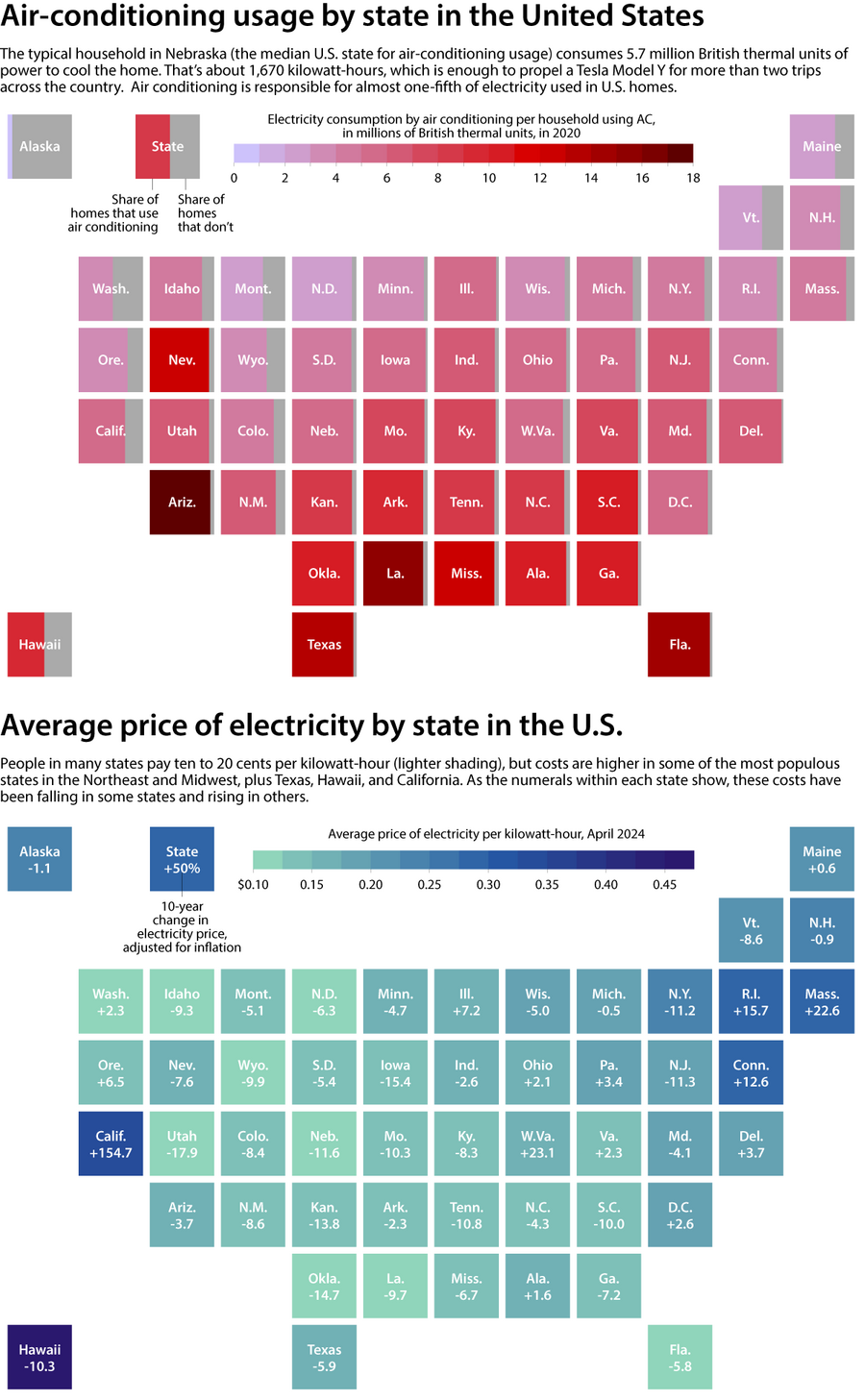Air conditioning gets expensive. Here’s how to save money – and help the planet.
Loading...
Feeling hot – but not so hot about your power bill? You’re not alone.
Summer may seem like it’s winding down in places like New England, but other areas across the United States are still roasting, and using plenty of air conditioning. Triple-digit temperatures baked Southern California over the weekend and Phoenix is in a record streak of over 100 days above 100 degrees.
Air conditioning is responsible for almost one-fifth of electricity used in U.S. homes, according to the U.S. Energy Information Administration. It’s also the top electricity consumption source in commercial buildings.
Why We Wrote This
Demand for air conditioning is growing in the U.S., even as energy prices rise in some places. We made charts to track AC usage and costs in each state — and found tips for how to use AC effectively.
As summers become hotter and more humid, a 2021 modeling study estimated that air-conditioning demand could increase by 8% to 13% – and that’s on top of what many researchers have found to be a growing American expectation of climate-controlled living. (Almost all new single family homes today are built with central air conditioning, compared with only half in 1973, according to U.S. Census Data statistics.)
Put that increasing AC demand with rising energy prices in some areas, and consumers can feel the strain. A recent AP poll finds that around 7 in 10 Americans say extreme heat has had an impact on their electricity bills in the past year.
But there are ways households and businesses can save money – and lower their carbon footprints at the same time. (Nationwide, the power that runs those air conditioning units still comes largely from fossil fuels – although renewable energy sources are growing.)
First, use AC with moderation. A review of Center for the Built Environment Occupant Surveys showed that around 40% of office workers dislike the temperature in their offices. A 2021 academic article found that women in particular are more likely to be negatively affected by overcooling. At home, making the temperature just a few degrees warmer can make a significant difference in electricity prices. The U.S. Department of Energy found that adjusting the thermostat by 7 to 10 degrees Fahrenheit for eight hours a day can lead to up to 10% in annual savings.
Second, weather up: Data from the Energy Information Administration shows that replacing windows is the most effective renovation measure to reduce cooling energy use. Air sealing and improved insulation also help. Programs such as the U.S. Department of Energy’s Weatherization Assistance Program have helped millions of lower-income families save hundreds of dollars each year; tax credits are also available for retrofitting businesses and homes.
Third, get some shade. Department of Energy research shows that most sunlight that falls on standard double-pane windows enters the house as heat. Window attachments such as shades, awnings, or window films can help block out up to 60% of that sunlight and reduce demand for cooling.






